The New York Times recently published an article describing the incredible barriers many people face when trying to adopt a pet.
Home inspections, overly-long applications, references, home visits, fenced yard requirements, even fecal samples of existing pets—“Want to Adopt a Pet? Prepare for a Full Background Check” describes discriminatory adoption practices that are all too common in the animal welfare industry.
If readers find this piece a shock, to animal welfare professionals it’s no surprise. We know these barriers exist, and we know what they lead to: people who want to welcome a shelter pet into their home are not able to do so, while approximately 1.5 million shelter pets are euthanized in shelters every year.
It’s long past due time to recognize and eradicate these barriers to finding loving homes for pets.
We’ve built this initial list of 27 common barriers, but it is not complete. Let us know what other barriers you’ve seen or experienced—and what you are doing to sweep them away. Reach out to us here or post on the HASS Facebook page.
We need to work together to engage our communities, end discriminatory practices, help families bring shelter pets into their homes, and save more animals’ lives in so doing.
27 Extremely Common Animal Welfare Adoption Practices and Policies That Exclude Adopters
- Mandatory background checks
- Mandatory home inspections
- Fenced yard requirements (which sometimes even require a fence be six or eight feet high)
- Proof of vaccine and sterilization status of existing pets
- Veterinary reference checks
- Landlord or HOA reference checks
- No adopters with children (or small children)
- No adopters under a certain age (commonly 21 to 25)
- No adopters in college
- No adopters in the military
- Mandating older adopters adopt only “senior” pets (sometimes called “seniors for seniors”)
- No adopters who work full time outside the home
- No adopters who will keep pets outside (partly or solely)
- Over-inclusive “do not adopt” lists (people are often permanently placed on these for surrendering a pet or getting any citation)
- Unfriendly, rude, or hostile treatment by a staff member or volunteer
- High adoption fees and no sliding scale or fee reduction system
- “Ghosting” potential adopters by not responding to communication
- Intimidating or scaring potential adopters in order to prevent them from adopting
- Sharing misinformation or lying to potential adopters to prevent them from adopting
- Asking for an adopter’s medical history, criminal history, employment status, income, or other unnecessary personal information
- Any other form of discrimination based on real or perceived race, ethnicity, economic status, housing status, gender, sexuality, sex, size, appearance, age, disability, or health status
- Operating only during standard business hours (no weekend or evening hours)
- Requiring multiple visits to the shelter before adoption
- Requiring “meet and greets” with an entire family, or all existing pets, before adoption
- Long or overly burdensome adoption applications or processes
- Unwelcoming or uncommunicative staff and/or volunteers
- Mandatory waiting periods before an animal can go home
How to Fight Discriminatory and Other Exclusionary Practices in Animal Welfare Organizations
1. Speak up.
Whether you’re a staff person, volunteer, foster caregiver, or member of the public, point out to the people in charge that a current practice is excluding potential adopters and is preventing pets from going to great homes.
Sometimes directors and managers don’t even realize a current practice or policy may be creating harmful barriers to placement. You can often fix things just by pointing out the barriers and sharing ideas for what to do instead.
2. Replace blanket policies and restrictions with a conversation-based approach to engaging with potential adopters.
The Adopters Welcome manual by the Humane Society of the United States remains a highly relevant and important guide to ensuring your animal welfare agency welcomes everyone to be part of the solution. You can also read what our friends at Million Cat Challenge have to say about removing adoption barriers.
3. Don’t adopt from organizations that have blanket barriers, adoption restrictions, or practices that discriminate against some adopters.
You can often learn a lot by just looking at the organization’s website and adoption application or process. If you do decide NOT to adopt from an organization for these reasons, be sure to let them know.
4. Do adopt from animal shelters and rescue groups that welcome everyone.
While most animal shelters are extremely busy and have too few resources, you should always feel welcome when you choose to adopt a pet. The best organizations make all adopters feel celebrated when they add a new furry friend to their family!
5. Go on a barrier busting mission!
Find barriers and discriminatory practices and get rid of them. Every exclusionary practice (YES every single one!) can be replaced with a practice that treats all potential adopters equitably and respectfully and creates great matches between pets and people.
Use this checklist to identify and eradicate barriers in your organization. As you bust barriers to adoption, track your data to show that your organization can be just as safe, humane, and effective without all the restrictions.








